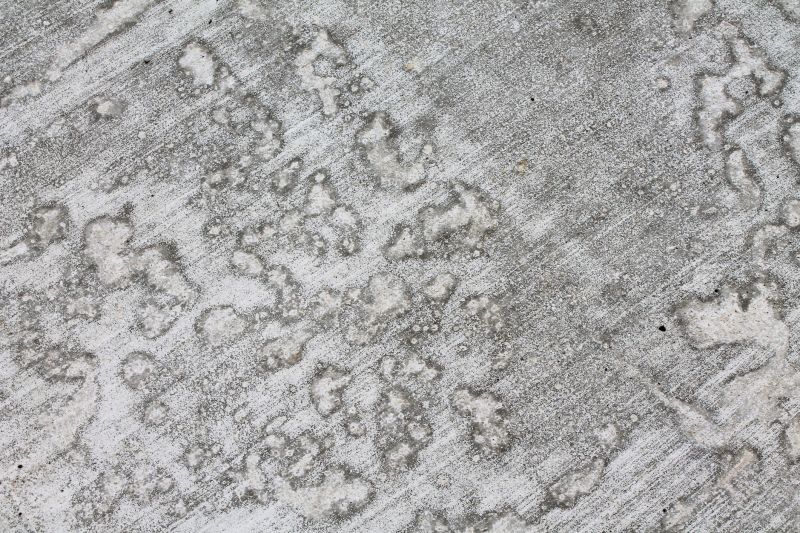Top-Rated Products For Concrete Acid Stainings For Professional Results
Explore trusted tools and solutions designed to produce vibrant, durable, and visually appealing acid stained concrete surfaces.
 Products for concrete acid staining encompass a variety of formulations designed to enhance the aesthetic appeal of concrete surfaces through chemical reactions that produce vibrant, variegated colors. These products typically consist of acid-based solutions that react with the minerals in concrete, creating unique and often marbled effects. The application process involves preparing the surface, applying the stain evenly, and allowing it to react and develop its color palette. Proper sealing after staining is crucial to preserve the visual impact and protect the surface from wear and staining.
Products for concrete acid staining encompass a variety of formulations designed to enhance the aesthetic appeal of concrete surfaces through chemical reactions that produce vibrant, variegated colors. These products typically consist of acid-based solutions that react with the minerals in concrete, creating unique and often marbled effects. The application process involves preparing the surface, applying the stain evenly, and allowing it to react and develop its color palette. Proper sealing after staining is crucial to preserve the visual impact and protect the surface from wear and staining.
Top Overall Option
Versatile Acid Stain Kit
A comprehensive acid stain kit that offers a range of color options, easy-to-follow instructions, and compatible sealers. Designed for both beginners and experienced users, it provides consistent results and professional-looking finishes. The kit includes pre-mixed stains, protective gear, and sealing solutions to simplify the staining process from start to finish.
Types of Products For Concrete Acid Stainings
Liquid Acid Stains
Pre-mixed liquid solutions that are easy to apply with sprayers or brushes, offering quick and even coverage with a variety of color options.
Powder Acid Stains
Powdered formulations that are mixed with water or carriers, allowing customization of color intensity and effects.
Reactive Dyes
Specialized dyes that produce subtle, nuanced coloration through chemical reactions with concrete minerals.
Water-Based Acid Stains
Less corrosive options that utilize water as a carrier, suitable for indoor applications and delicate surfaces.
Solvent-Based Acid Stains
More potent formulations that penetrate deeply for bold color effects, often used in industrial or outdoor settings.
Eco-Friendly Acid Stains
Formulations designed to minimize fumes and emissions, suitable for environmentally sensitive projects.
Color Enhancers
Products that amplify the vibrancy and depth of existing stain colors for a more striking appearance.
Sealers for Acid Stains
Protective coatings that seal in color and provide resistance against stains, moisture, and wear.
Etching Solutions
Preparatory products that roughen the concrete surface to improve stain adhesion and reaction.
Neutralizing Agents
Products used to neutralize residual acid after staining, ensuring surface safety and longevity.
Color Mixers
Tools and products that allow blending different stains to achieve custom shades and effects.
Protective Coatings
Additional layers of protection to enhance durability and preserve the stained appearance.
Application Tools
Brushes, sprayers, and rollers designed for even application of stains and sealers.
Touch-Up Products
Small-scale stain kits and repair products for fixing or enhancing stained areas.
Popular Choices
Widely used for their ease of application and quick coverage, offering a variety of colors.
Flexible options for customized color effects, favored for artistic concrete projects.
Known for producing subtle and complex coloration, popular among decorative concrete enthusiasts.
Essential for protecting stained surfaces and maintaining color vibrancy over time.
Reliable brushes, sprayers, and rollers that facilitate even application and professional results.
Products that boost the intensity and depth of stain colors, popular for striking finishes.
Commonly used to prepare surfaces for staining, ensuring better adhesion and reaction.
Frequently used to neutralize residual acids post-staining, ensuring safety and longevity.
Convenient for small repairs and maintaining the appearance of stained concrete.
The range of products available includes liquid acid stains, powder stains, and reactive dyes, each offering different application methods and color options. Liquid stains are easy to apply with sprayers, brushes, or rollers and provide quick coverage. Powder stains can be mixed with water or other carriers to customize intensity and color depth. Reactive dyes often produce more subtle and nuanced effects, ideal for decorative or artistic projects. Selecting the right product depends on the desired visual outcome, surface type, and application environment.
Preparation is key to achieving consistent results. Surface cleaning to remove dirt, oils, and previous coatings ensures proper adhesion and reaction. Testing stains on a small area can help predict the final appearance, as color variations are natural and influenced by the concrete’s composition. After staining, sealing with a compatible concrete sealer enhances durability and preserves the color vibrancy. Regular maintenance and resealing can prolong the aesthetic appeal of stained concrete surfaces over time.
It is important to follow manufacturer instructions carefully to ensure safety and optimal results. Acid stains are corrosive and require protective gear, proper ventilation, and safe handling procedures. Compatibility with existing finishes and the ability to achieve the desired color palette should also be considered. Investing in high-quality products and proper application techniques can lead to more consistent, durable, and visually appealing stained concrete surfaces.
Key Buying Considerations
- Compatibility with existing concrete surfaces and finishes.
- Type of stain (liquid, powder, reactive dye) suitable for your project goals.
- Color palette options and ability to achieve desired visual effects.
- Ease of application and required tools or equipment.
- Surface preparation requirements for optimal results.
- Sealing and protective options to enhance durability and color retention.
- Safety precautions, including protective gear and ventilation needs.
- Drying and curing times for stains and sealers.
- Resistance to wear, stains, and environmental factors relevant to the location.
- Compatibility of stains with sealers and topcoats.
- Cost considerations and availability of product kits or individual components.
- Brand reputation and user reviews for reliability and performance.
- Environmental factors such as indoor vs outdoor application considerations.
- Application environment constraints, such as temperature and humidity.
- Availability of technical support or instructions for best results.
